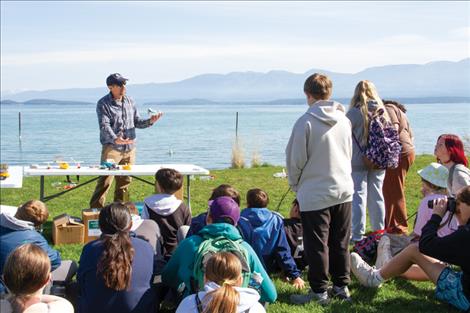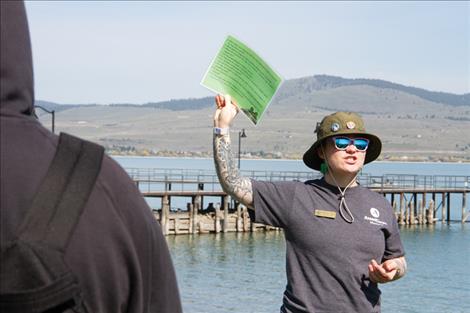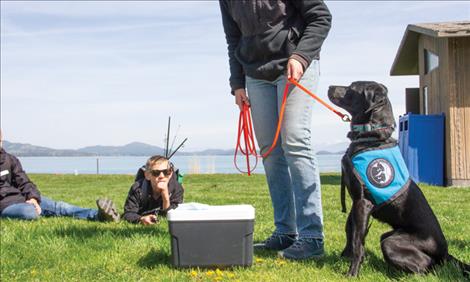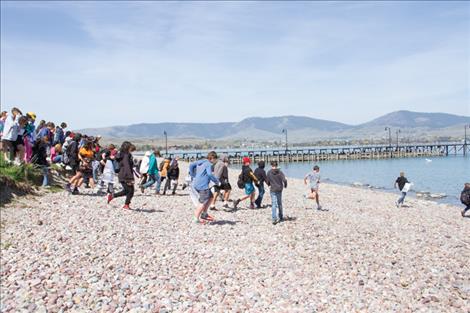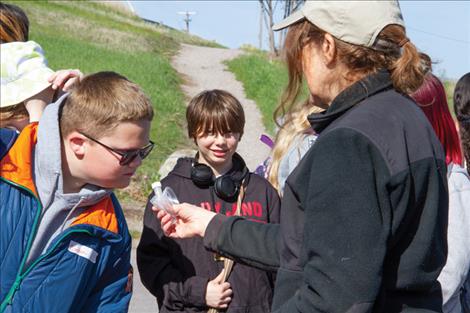Annual mussel walk highlights importance of prevention
Hey savvy news reader! Thanks for choosing local.
You are now reading
2 of 3 free articles.
FLATHEAD LAKE — A tiny creature that poses a huge threat to Flathead Lake was the subject of an annual mussel walk event held April 24 at Salish Point in Polson.
Polson Middle School seventh graders cycled through six stations that explained what quagga and zebra mussels are, how they’re detected, the consequences their introduction poses to the lake’s ecosystem, as well as the preventative measures being taken to keep them from entering. The educational event is a collaboration among the Confederated Salish and Kootenai Tribes’ Aquatic Invasive Species Program, Montana Fish, Wildlife and Parks and the Flathead Lake Biological Station.
Quagga and zebra mussels are found in prolific numbers in lakes and reservoirs in the northeastern part of the country – particularly in the Great Lakes. Though they are tiny, as small as a grain of sand and up to 4cm in size, they colonize areas quickly and cost millions to manage once established. Microscopic larvae are able to survive in standing water for up to three days while adult mussels can live up to 30 days outside water.
Disruption of irrigation systems, closure of recreational areas and disruption of fish populations are just some of the many problems these invasive mussels pose for people, according to a field guide distributed by Crown Managers Partnership.
Polson students spent two weeks learning about aquatic invasive species during science to prepare for the mussel walk. They learned that once established, quagga and zebra mussels have devastating effects on local food webs. The mussels’ adaptability, resilience, rapid spread and reproduction lead to severe impacts for other creatures in the same environment.
Students also learned about prevention efforts, including boat inspections by both people and dogs. Deb Tirmenstein, of Montana Black Dog Services, brought the four dogs she’s trained to do mussel detection to the event. With a sense of smell thousands of times greater than that of people, the dogs can detect mussels and larvae that escape human detection. Tirmenstein demonstrated how her dogs detect mussels but hiding a vial with ground up shells on a boat. She then brought out one dog at a time to show how they indicated, each in their own way, that they’d detected mussels. One would sit and look at her. Another dog barked. All of her dogs, Tirmenstein explained, are excited to do inspections as they see it as game. She also showed students one of the many games she created to teach her dogs how to do inspections.
At another station, students learned how watercraft mussel detections are made by humans and the decontamination steps that are followed once a craft is found to be mussel-fouled.
Watercraft inspection stations opened back up across the state in March. The Ravalli station, located 34 miles south of Flathead Lake on the US Hwy 93 corridor, is open from 7 a.m. to 7 p.m., 7 days a week.
The CSKT NRD Aquatic Invasive Species Facebook page remind boaters:
All watercraft coming into Montana from out of state must be inspected prior to launching.
All watercraft traveling west across the Continental Divide into the Columbia River Basin must be inspected prior to launching.
All watercraft entering the Flathead Basin must be inspected prior to launching.
Anyone transporting watercraft must stop at all open watercraft inspection stations they encounter.
And all boaters are reminded to always clean drain and dry their boat, live wells, anchors, boots and gear when leaving the water.















